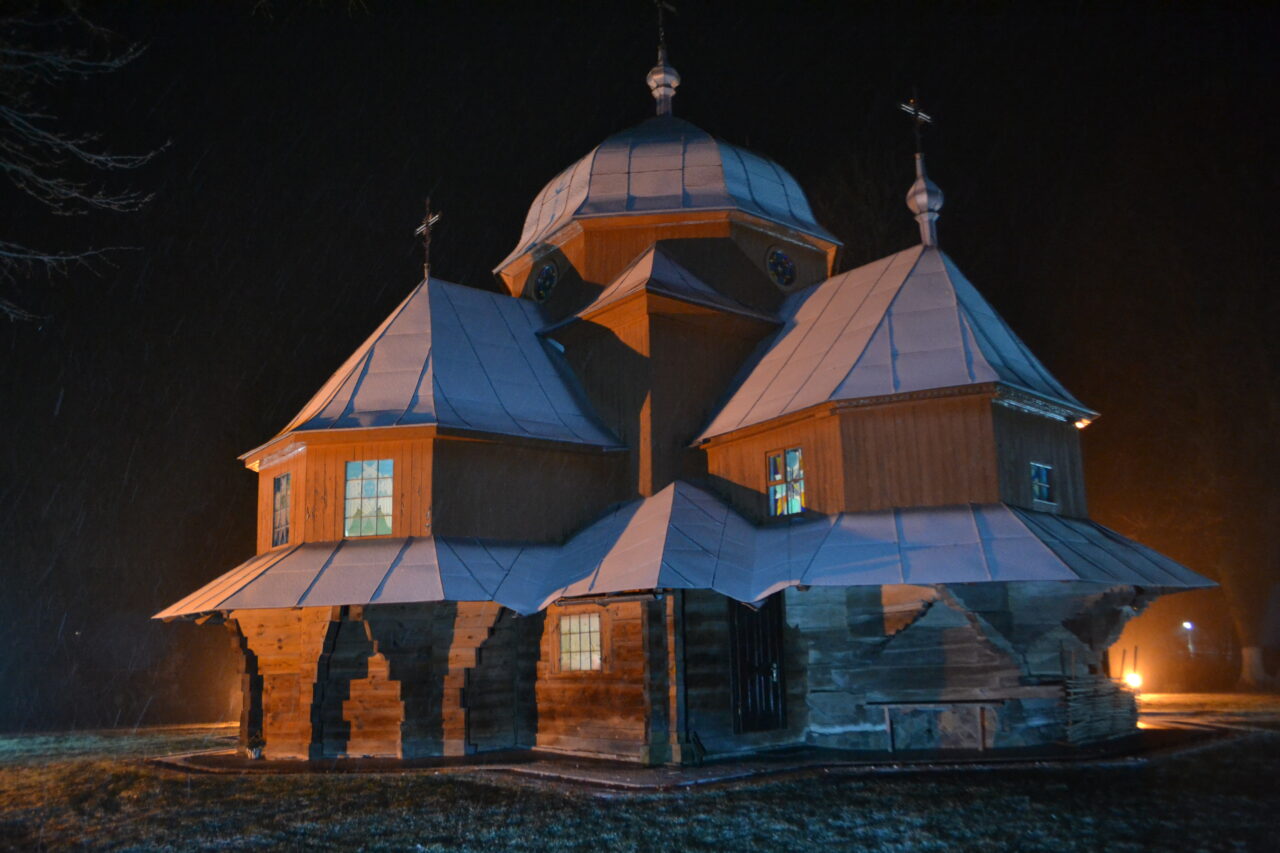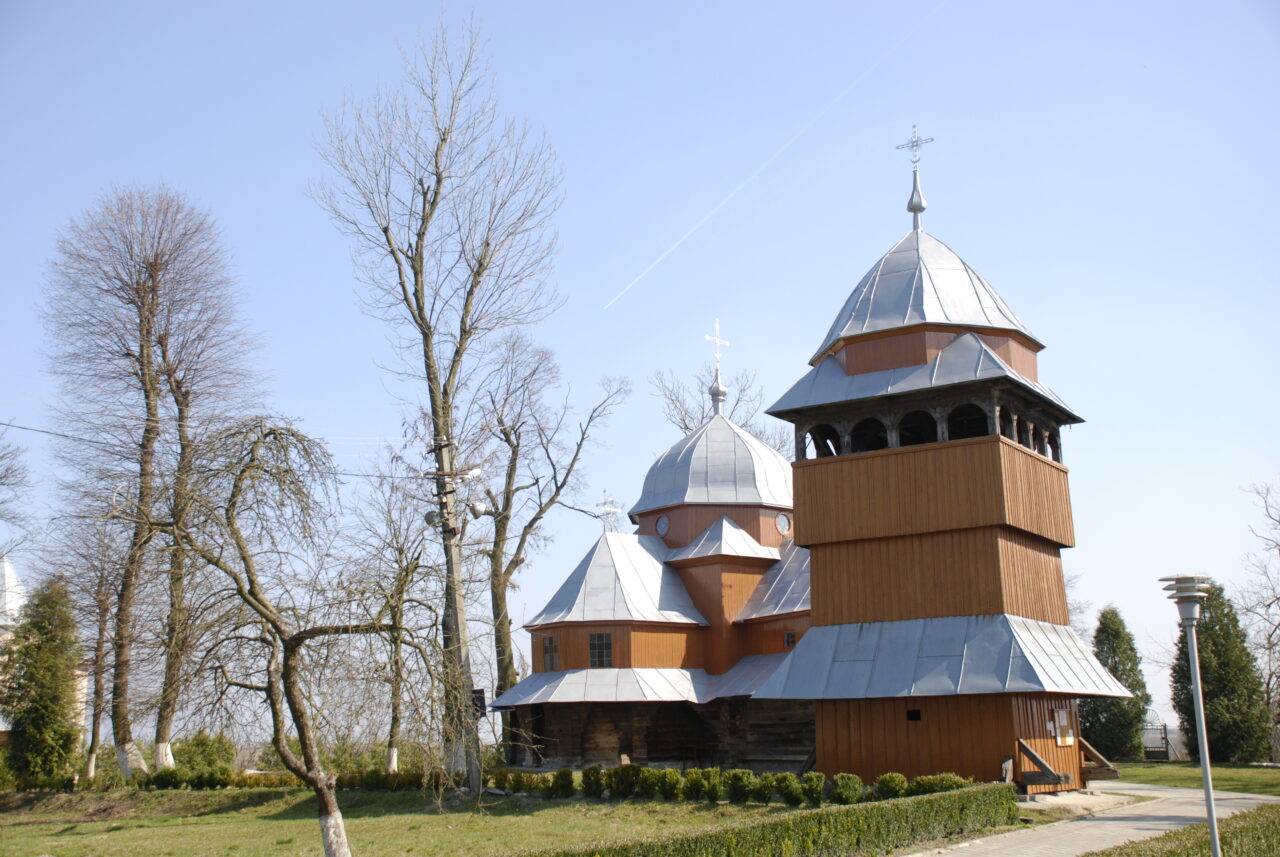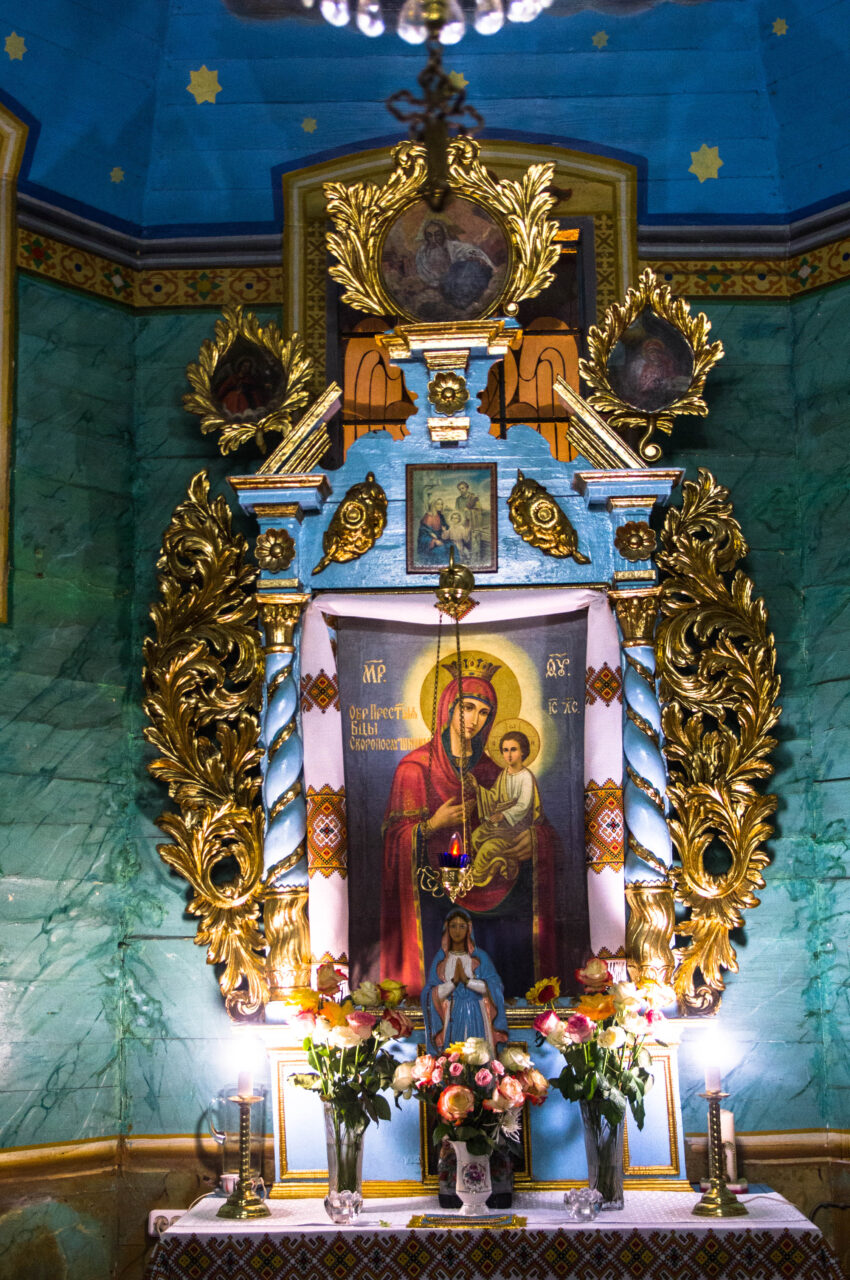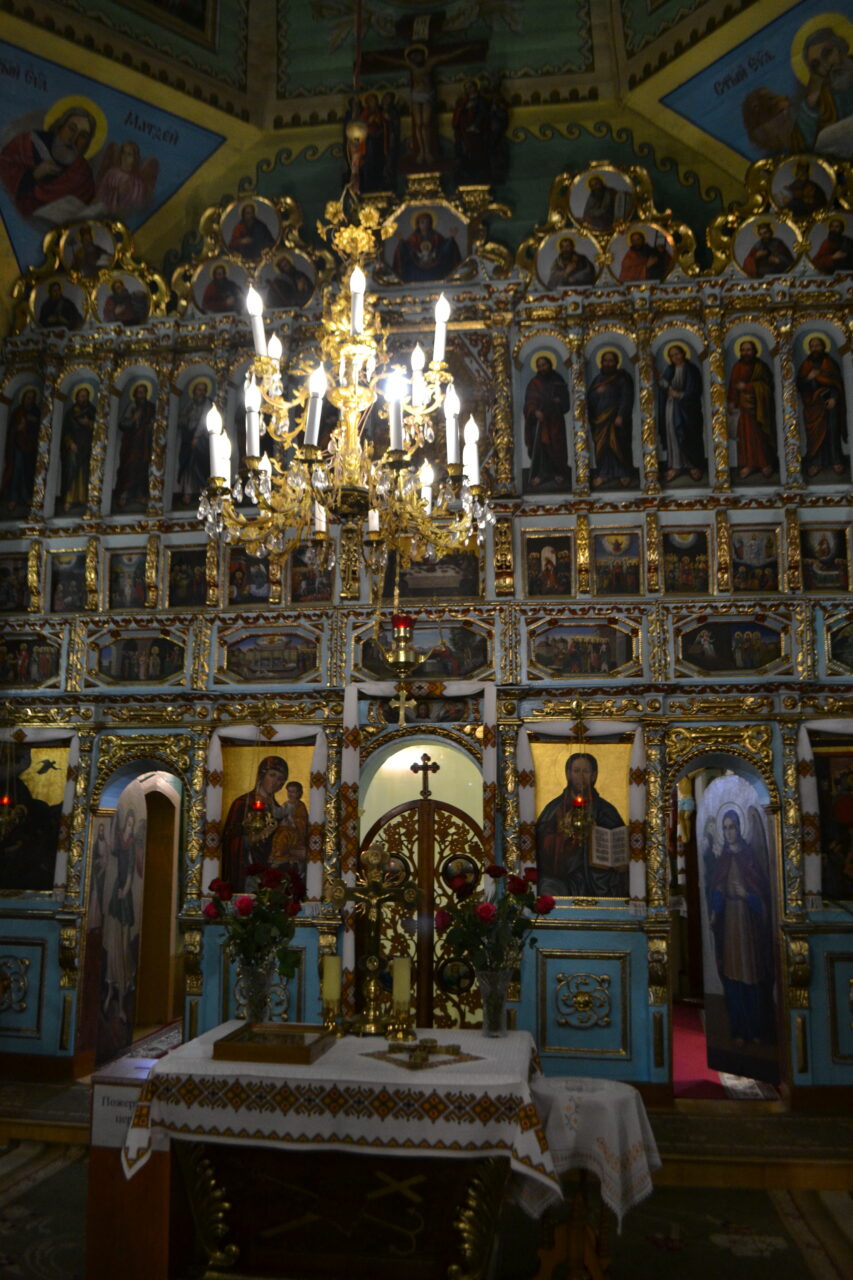Yavoriv is not flattered by tourists, but in vain. There are a few interesting things. The city displays some of its charms, such as St. George’s Neo-Byzantine brick church with a magnificent high wooden bell tower, or the town hall, stylized in the fiery gothic brick style of the European North.
And on the contrary, Yavoriv is hiding something – a modest house, which used to be
Yan Sobieskyi’s III, the most famous Polish king, favourite hunting castle. A small brick building, which for some time serve as a prison, is located on the territory of the military unit, where tourists are not allowed to enter.
And the queen of all Yavoriv architectural charms is somewhere in the middle, between these categories. You don’t need to get any permission to observe it, but you can’t find the building in the town centre. Since the oldest Yavoriv sacred monument, the wooden church of the Nativity of the Virgin, is situated a little further from the administrative centre, on Lvivska street, in the former Small Suburb.
First, a gray brick bell tower appears on the small hill among thujas. Next, there is a garden path among the trees. The church territory is large, spacious, cozy, and very green. And here is the shrine itself. There are low doors on figured ancient canopies, under-gallery made of open log cabins, walls covered with small scales of vertical shawls.
The temple under a gray tin dome and the same color wide attic does not seem to be at its solid age. But the documents chilly suggest that the foundation charter for the construction of the shrine was issued by Mykhailo Korybut Vyshnevetskyi, the Rzeczpospolita King, in 1670. And immediately the work came in full swing. The masters, invited by the priest Yakiv Zahanevych, were working so fast that the Church of the Nativity of the Mother of God was constructed the same year. Probably, those builders had never heard of the term ‘Galician architectural school’, but this is exactly what their brainchild is, an amazing example of Galician folk architecture.
The shrine was built not in an empty place, as there already used to be the predecessor churches. And there are the data proving that there was a wooden church here in 1572. In 1588 King Sigismund III of Poland granted permission to build a temple for Ruthenians. Who knows, what happened to it next. At that time wooden shrines had plenty of enemies, such as Tatar raids, frequent fires and just relentless time.
The church, built in the 17th century, was smaller and more compact at the beginning of its life. Two side wings-rams were added to the main volume according to the famous Galician architect Yevhen Nahirnyi’s project, just before the Second World War in 1939. So the one-story church became cruciform in plan. The dimensions of the building are 14.8 by 14.3 m.
The nave itself is square in plan. A faceted altar is attached to it from the east side. The altar is slightly narrower than the nave. From the south and north the side arms in 1939 were added to the church. The western part through which the perishers enter the church, there is a rectangular narrow narthex.
The temple operated until 1960. It was closed then and a granary was set up here. Very often it was just a loud name for party bosses, to save ancient buildings from destruction; they threw several bags of grain for proforma. Just to save them.
The church was returned to the faithful in the twilight of the agonizing USSR in 1989. The shrine is now cared for by one of the city’s Greek Catholic communities.
The interior impresses with a high four-tiered baroque iconostasis, dating back to 1671. Its turquoise frame is lavishly decorated with exquisite gilded carvings. It’s a pity, but all the images in the iconostasis have been repainted.
The temple windows are decorated with original monochrome stained glass paintings.
Not far from the shrine there is a bell tower, a slender tall beauty under a dome-helmet. On the second floor of the building there is a large arched gallery. The bell tower is square in plan, its dimensions are 4.3 by 4.3 meters.
The churchyard itself is also interesting. The quadrangular flat area elevated to the street, the river valley and neighbouring buildings is interrupted by rapid escarpments – apparently the church territory was an integral part of the city fortifications. You can descend into a high, stone-walled underground passage that stretches along the southern, facing the river escarpment. It is said to have traced to the castle…




